Digital Body is a series of ongoing intensive labs dedicated to exploring performance and technology hosted at LAKE Studios Berlin. Each lab is designed to break down preconceived notions about technology and art in order to reimagine from the ground up how technological tools might expand the creation, rehearsal and performance of live artworks. Guided by experts in the fields of dance and technology, and inspired by contributions from guest speakers, this lab series is intended to expand both participants’ practical technical skills as well as their philosophical grounding in the use of technology in performance. The Digital Body project consists of a small, reoccurring group of artists who convene yearly to build on skills and knowledge from previous labs. A Process Blog, maintained by participants, accompanies each lab. Hosted by Mark Coniglio, Benjamin Krieg and guests.
Digital Body Lab is supported by DIEHL+RITTER/TANZPAKT RECONNECT, which is funded by the German Federal Government Commissioner for Culture and the Media as part of the NEUSTART KULTUR initiative. Digital Body Residency Project is supported by:

DIGITAL BODY LAB NO.1: IMAGE & DATA
02.09.2021 – 14.09.2021
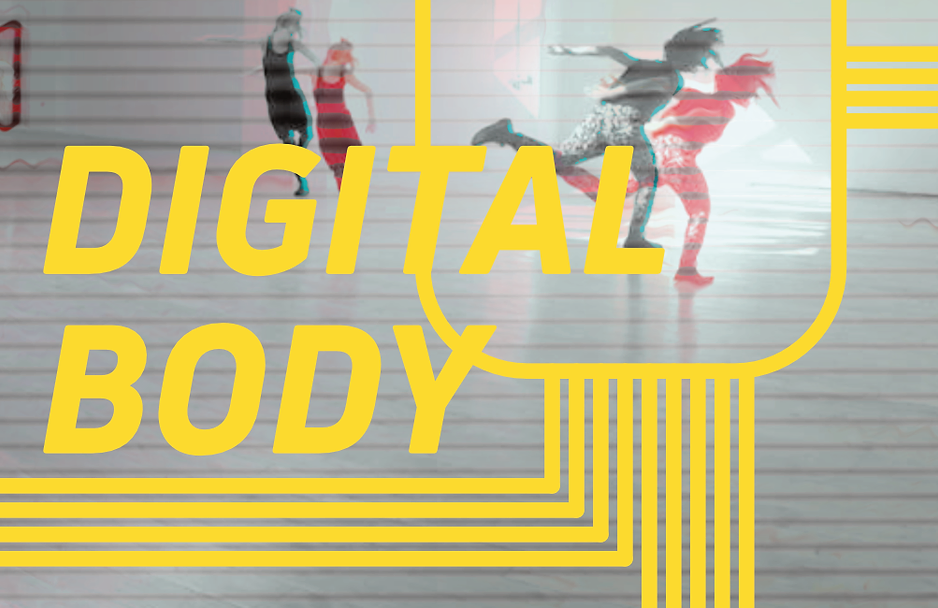
The DIGITAL BODY no.1 was a two-week intensive Performance & Technology Laboratory at Lake Studios Berlin, where invited participants were invited to destroy and reconceive notions of how technology can be used to expand the language of performance. Supported by the Tanzpakt Reconnect NEUSTART Kultur with Federal funds from the BKM, the lab was an opportunity for professionals working in the field of dance and performance and to experiment, exchange, challenge, and learn from each other. It was hosted by Mark Coniglio, Benjamin Krieg and guests, among with 14 international researchers in the field of performance and technology.
Registers of the process can be accessed below, and also in the Marlon Barrios Solano’s DANCE-TECH blog here, or Mark Coniglio’s Facebook page, here and here.
All text below is written by Mark Coniglio, and all pictures were taken by Benjamin Krieg.
September 2nd 2021
Setup for “DIGITAL BODY ” is ongoing at the Lake Studios Berlin and today was sensor day. We have prepared a range of input devices so that once underway nothing would slow the creative juices flowing.

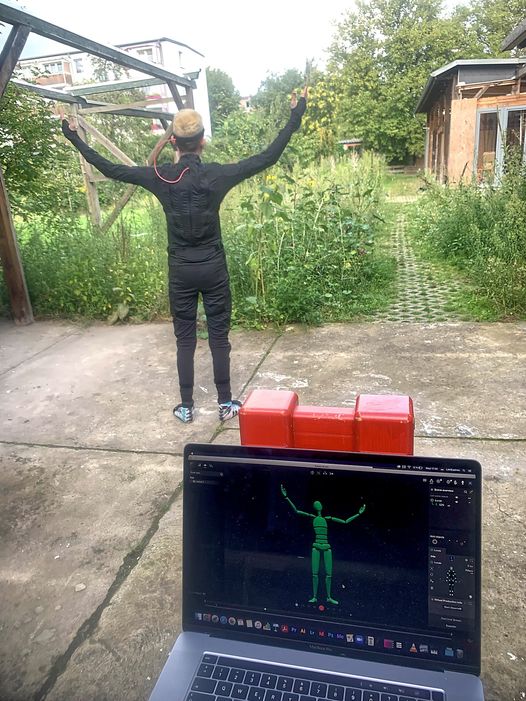
So happy to serve as a guide during this two-week process at the Lake Studios Berlin, as we attempt to reconsider media and performance, to name the potentials and pitfalls as we seek to see our practice anew.
Digital Body Workshop Journal: Day 1 – Abandoning Preconceived Notions
What are our expectations about performance and media? What are the prejudices and stereotypes we carry inside, our points of excitement and our irritations? We spent several hours exploring these questions during the first day of the workshop. It is our attempt to see the digital materials with fresh eyes so we might put them to use in new and unexpected ways.
Digital Body Workshop Journal: Days 2 + 3 – What is an Image?
The word slips easily from the tongue, but what do we really mean? We dug in to that topic as Benjamin Krieg shared from his vast body of work with groups like She She Pop and others, as Marlon Barrios Solano pushed us inward and outward with several poetic provocations, and Armando Menicacci led us through a rigorous, analytic examination of the structural implications of the word itself. We responded to all of this by having each participant create and share rapidly improvised scenarios comprised only of a projector connected to a video camera in relation to the performer and audience – each of which led to long, rich discussions of the implications and possible meanings they portrayed. When thinking about performance, what does the word image conjure for you?

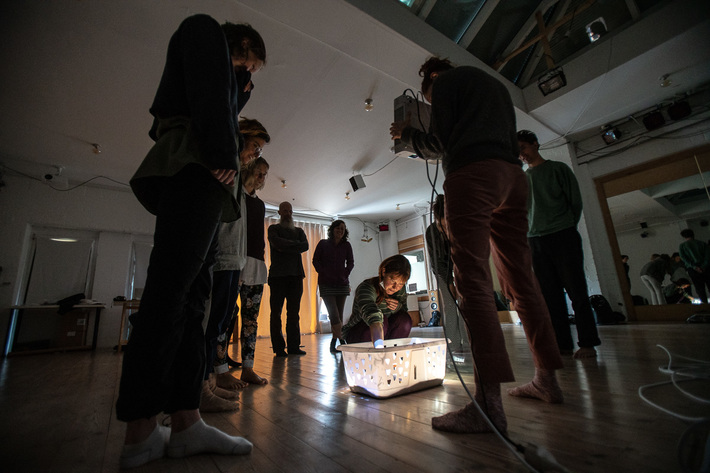

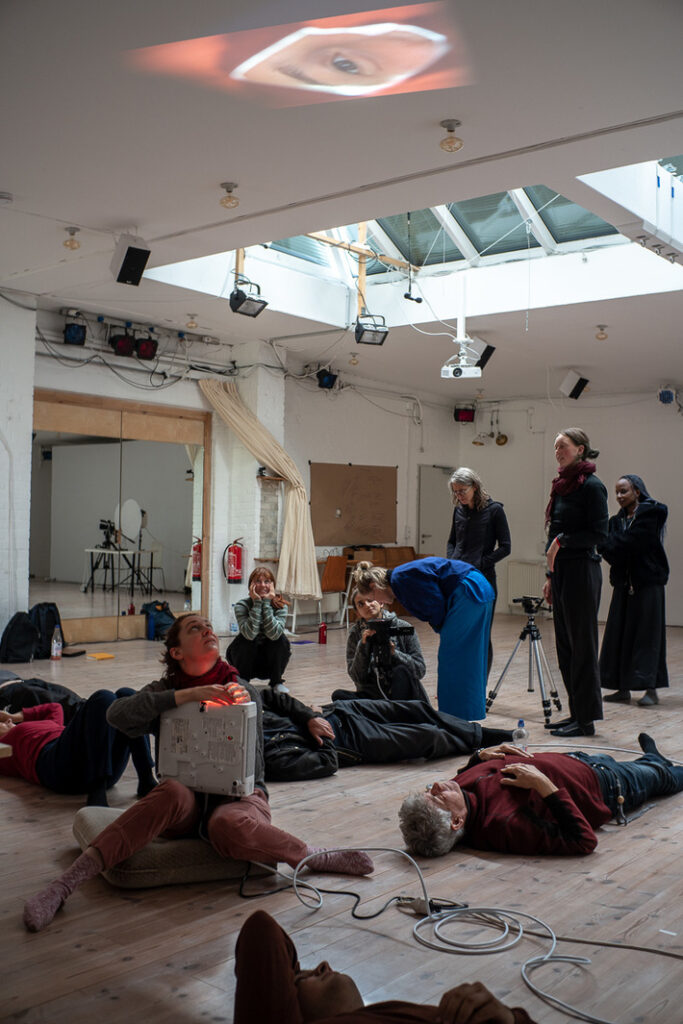
Digital Body Workshop Journal: Days 4 + 5: The Barrier of Technology.
After two full days of working only with the technology of a camera, a video projector, and a performer, we opened the door to more complex tools like Isadora itself, but also robotic cameras, green screens, a Rokoko motion capture suit, and more. Immediately upon doing so, the energy in the room changed from one of quiet experimentation and extensive reflection to one of excitement (“Wow!!!”), desire and curiosity (“I want to….” or “How can i…?”) and at least some frustration (“Why can’t I get this working?”). These tools and devices can offer fresh and compelling new modes of expression, but their complexity can also impede a free-flowing artistic process. Please join the conversation in the comments below by answering the question we’ll be asking next: what does media/technology give us, but what also does it take away?

Digital Body Workshop Journal, Week 1 – “What is it?”
For the last six days, we have attempted to (re)encounter the image: to imagine it, to read it, to wrangle the hardware and software required to record and render it. We did this within the frame of our overarching goal: to abandon preconceived notions and see these materials in a new way. As we start week 2, I ask myself, “how did we do?”In the end, it is impossible to ignore or deny thousands of years of seeing and making images, from cave paintings to virtual reality. It’s in our bones. Yet, we managed to keep ourselves in a constant state of questioning. As Bebe Miller wisely advised us to do last night, we kept stepping back and asking ourself one question, over, and over, and over again.”What is it?”For me, embracing that question was the great success of this first week. Now we will see if we can do the same with “data.”
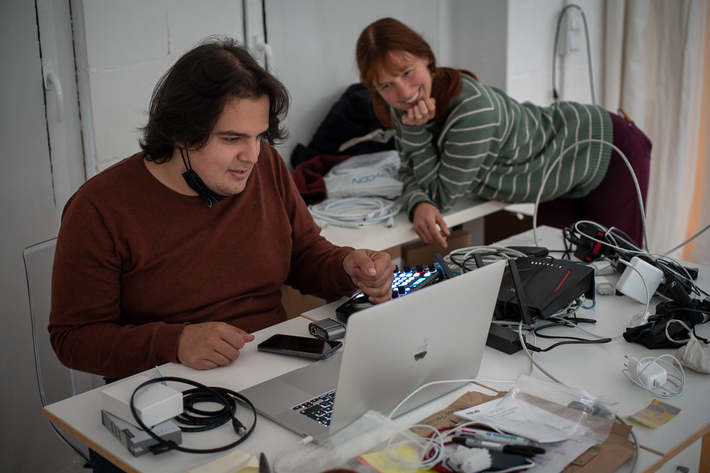
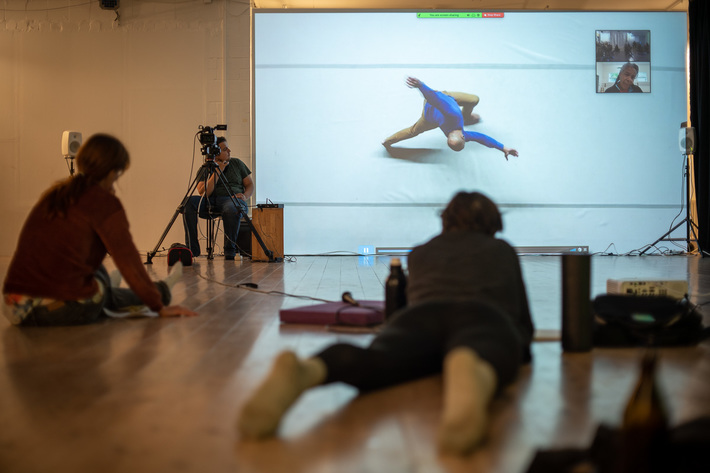
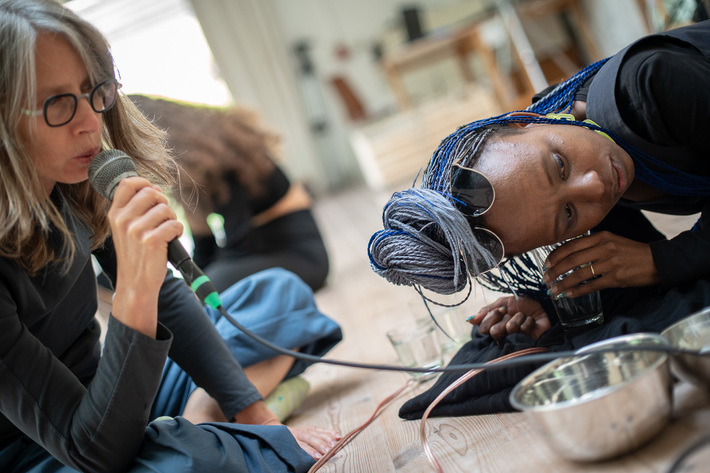
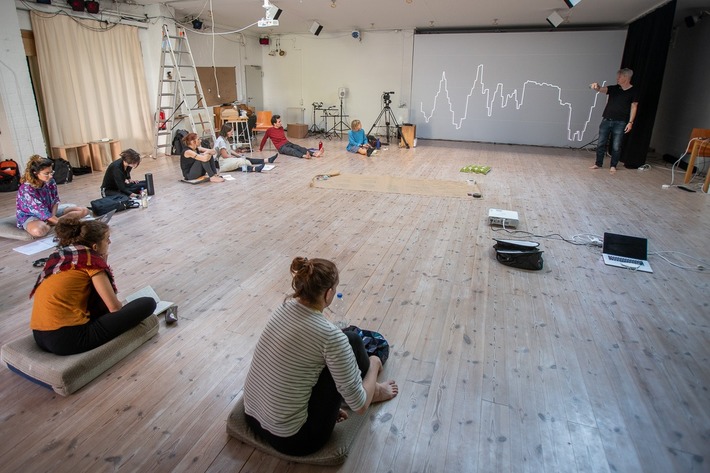
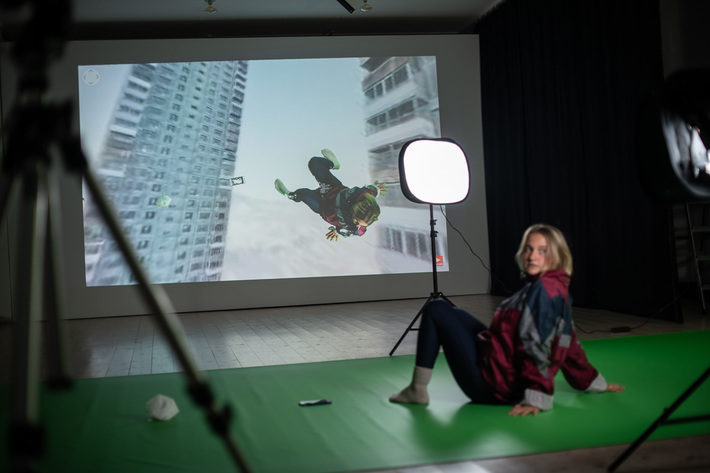
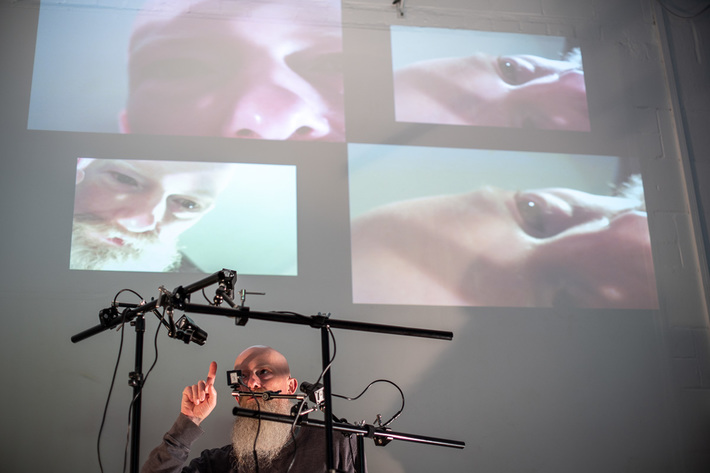
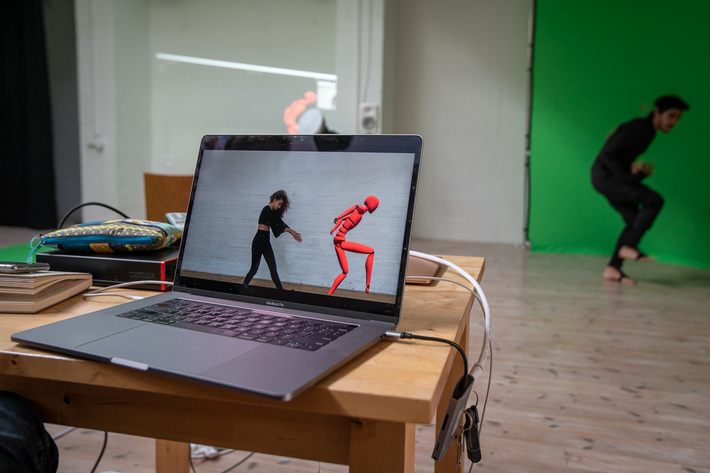
Digital Body Workshop Journal, Days 7 & 8 – Big Data
As we did with the word “technology” in the first week, we started the second week by asking “what is data?” This question could be debated ad infinitum, but here I will mention three crucial points: “data is interpretation and representation”, “data is a reduction”, and perhaps most importantly “data has value”. But how does this apply to using data, from a performer or from the world, in a performance?
Our guest speakers Ruth Gibson + Bruno Martelli (https://gibsonmartelli.com), and Bebe Miller (https://bebemillercompany.org) helped us dig in to those points with presentations that touched on technologies ranging from virtual reality to motion capture, though they continuously kept their focus on aesthetics and expression.With this in mind, we began to navigate “the gear”: this is a sensor, this is the kind of data it measures and represents, this is how we get it into the computer, and this is what we can do with it – practical realities that can often seem at odds with the artistry.
To assimilate and balance the theory, the “how to”, and the desire to express and share our artistic vision, remains the goal of this second week.
Digital Body No. 1 Journal – Day 9 – Data Invasion
Today’s pictures feature only the participants of the lab, because we spent nearly two hours today vigorously responding to the works presented by our guest speaker Christopher Kondek. (https://doubleluckyproductions.org)Each of the works dug into the topic of data in a different way – the stock market, our heart beats, lie detectors and more. But none did so more provocatively than “You Are Out There” – where audience members were asked to give their identification cards as a deposit for a set of headphones, not knowing that the faces and names on those personal documents would be projected, scanned, seemingly shredded (it was faked) and otherwise exposed to the entire audience in various ways.This highly political work led to an intense discussion among us: could an art piece ethically draw attention to matters of data privacy by violating that privacy?
I cannot reproduce the incredibly well articulated points that so many of our intrepid explorers offered in a Facebook post. Suffice to say, thanks to Chris’ presentation and the ensuing discussion, we could no longer pretend that data was just a stream of numbers captured from a performer’s body. Losing control of your data, especially for those who live under authoritarian regimes, is not a game. It is a matter of life and death – a notion that will weigh strong on our minds as we continue through this week.




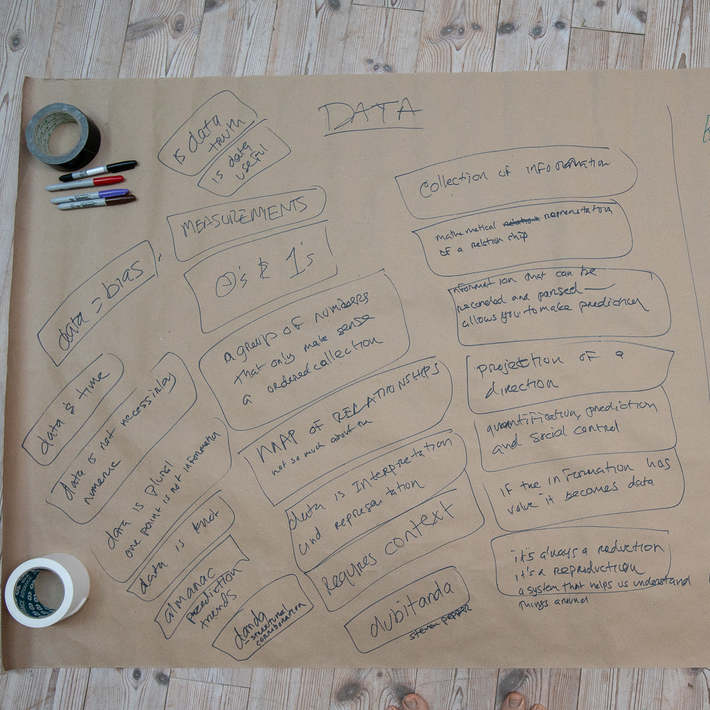

Digital Body No. 1 Journal – Day 10 – A Big Fat Mess of Data
Continuing to consider data, I launched the group into the following process: I would capture four parameters of movement from Marcela Giesche as she danced, and transmit those four continuous parameters to the computer of every participant in the workshop. They were instructed to build patches would use these parameters to manipulate video, sound and/or light.
Simple enough, right? Except for this “catch”: no would know anything in advance about these four streams of data – their source, the way they might of change over time, even if they were coming from Marcela’s body at all.
After an afternoon of preparation, everyone turned on their computers, video projectors, amplifiers and other gear, Marcela started dancing, and the fours streams of numbers became a cacophony of oscillating images, evolving sounds and vibrating light.It truly was a big, wonderful mess. And yet, very quickly, the participants began to see relationships between the data and the movement, as well as patterns in the way it changed over time. This allowed them to refine how they responded to the data and to organize it into something that held more meaning for them individually.
In other words, we let noise evolve into pattern by letting our brains see _into_ the data… putting us in an excellent place to create the final short studies we would present on the last day.

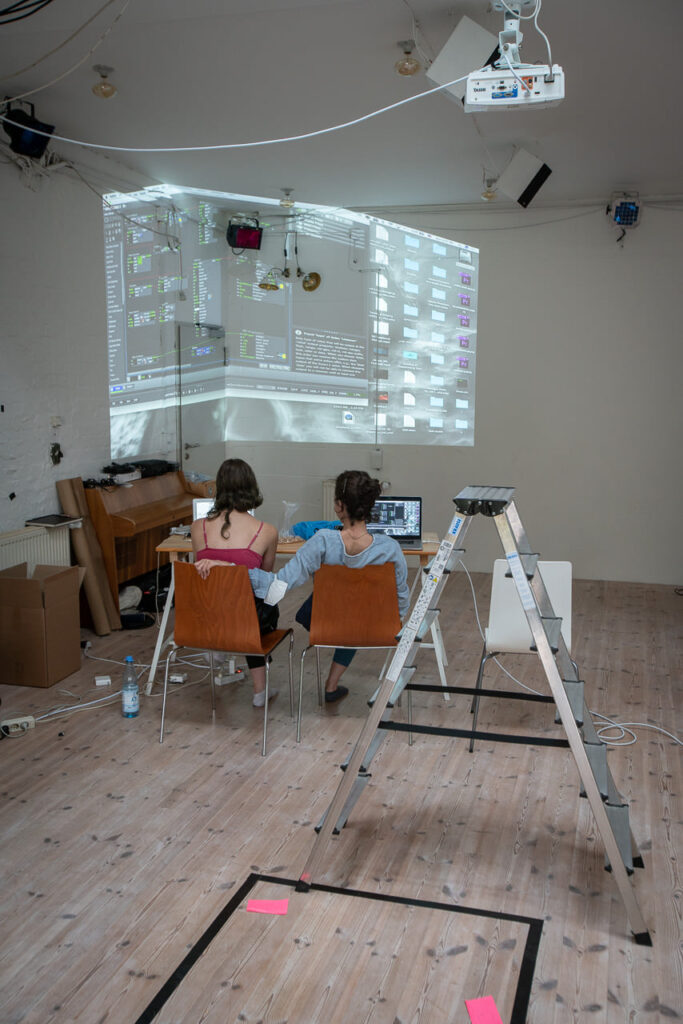



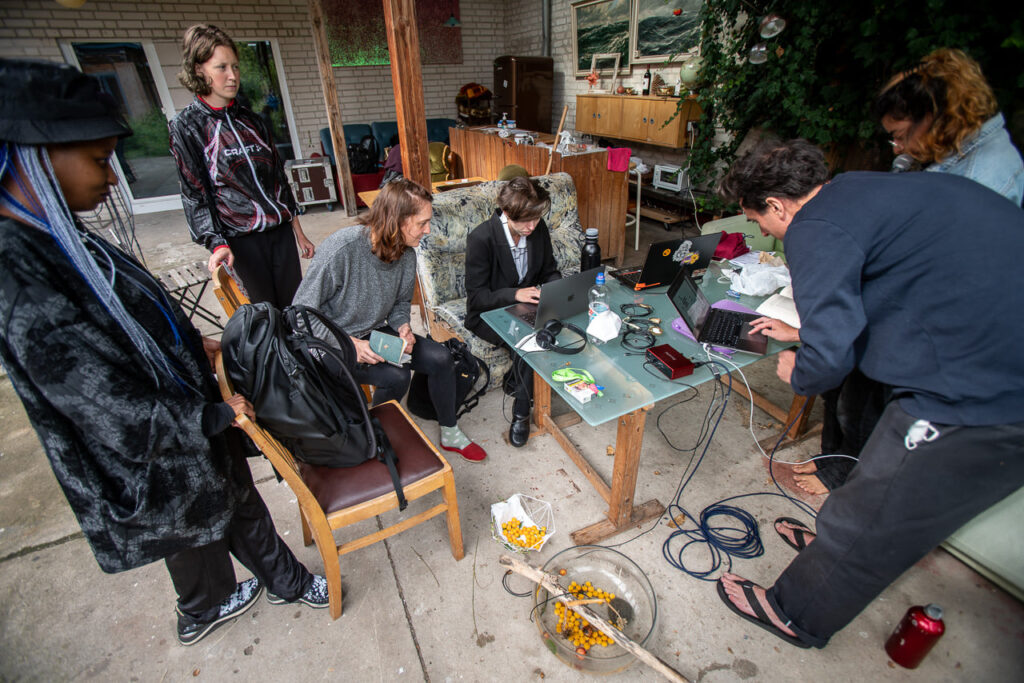
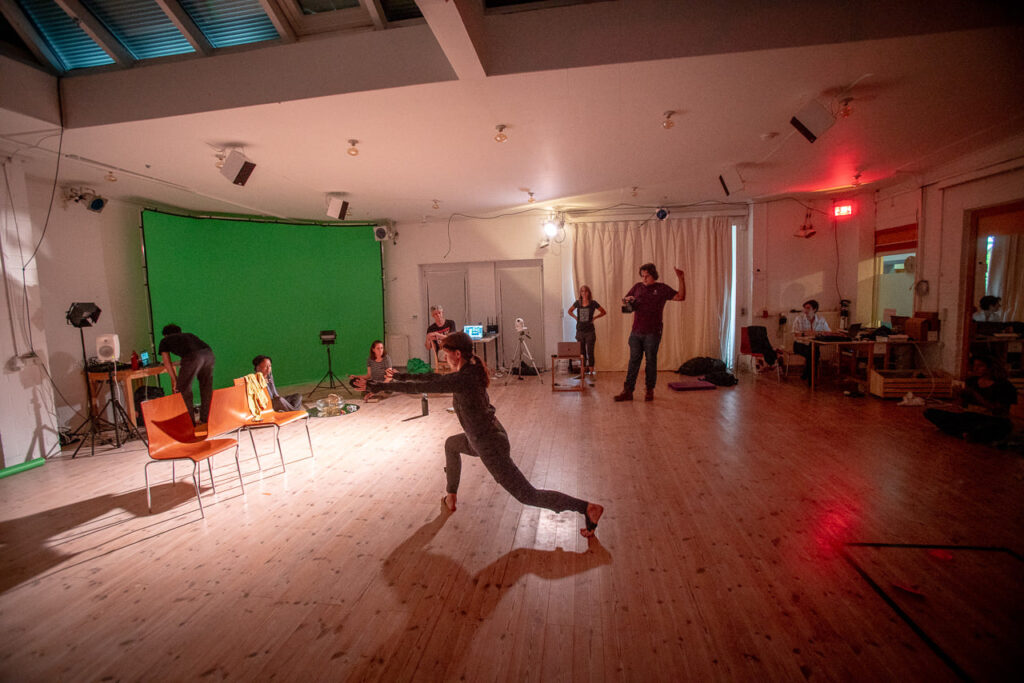
Digital Body No. 1 Journal – Days 11+12 – The Proof Is In the Pudding
So, after all the inspiration from our guest speakers, after all the experiments and passionate discussions, the lunches and dinners together, it was time to individually, or in small groups, make something to show each other.
On the very first day, I asked the participants to repeat two sentences after me: “I will accomplish nothing during the next two weeks” and “I will embrace failure.” I did this as a way of reminding them that the process was the product, and that when we got to the point of making these short studies, there needn’t be any pressure to deliver anything at all.
Still, the notion of a “premiere” runs deep in performing artists. While everyone retained the spirit of their earlier promise, they also worked diligently to assimilate what we had taken in over the past 10 days as they created these short studies. In one, the computer attempted to sense happiness (a smile) or sadness (a frown) in the performer, but became beautifully confused during the in-between state; in another, a collective of four women formed to explore their personal stories of loss and trauma with a sound collage manipulated by their own bodies; in yet another, a connection between the the slow rotation of the dancer was echoed by a pan-tilt-zoom camera that, through its own rotation, generated gently evolving patterns of video feedback.
I felt lucky to experience these highly personal expressions of what all we had done, discussed, and debated. But the biggest “D” word I felt upon viewing these creations was “delight”. Together we had come not to an end, but to place where we could see an open door to bigger and bolder media performances and artworks to come. I am excited to see what lies beyond that portal for our intrepid explorers.

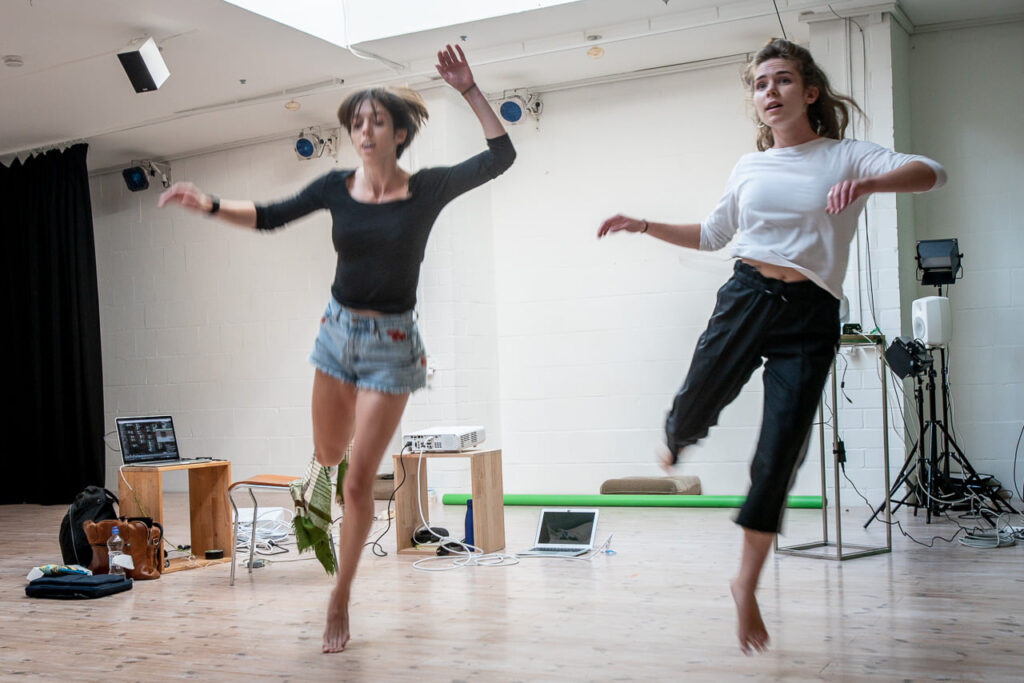

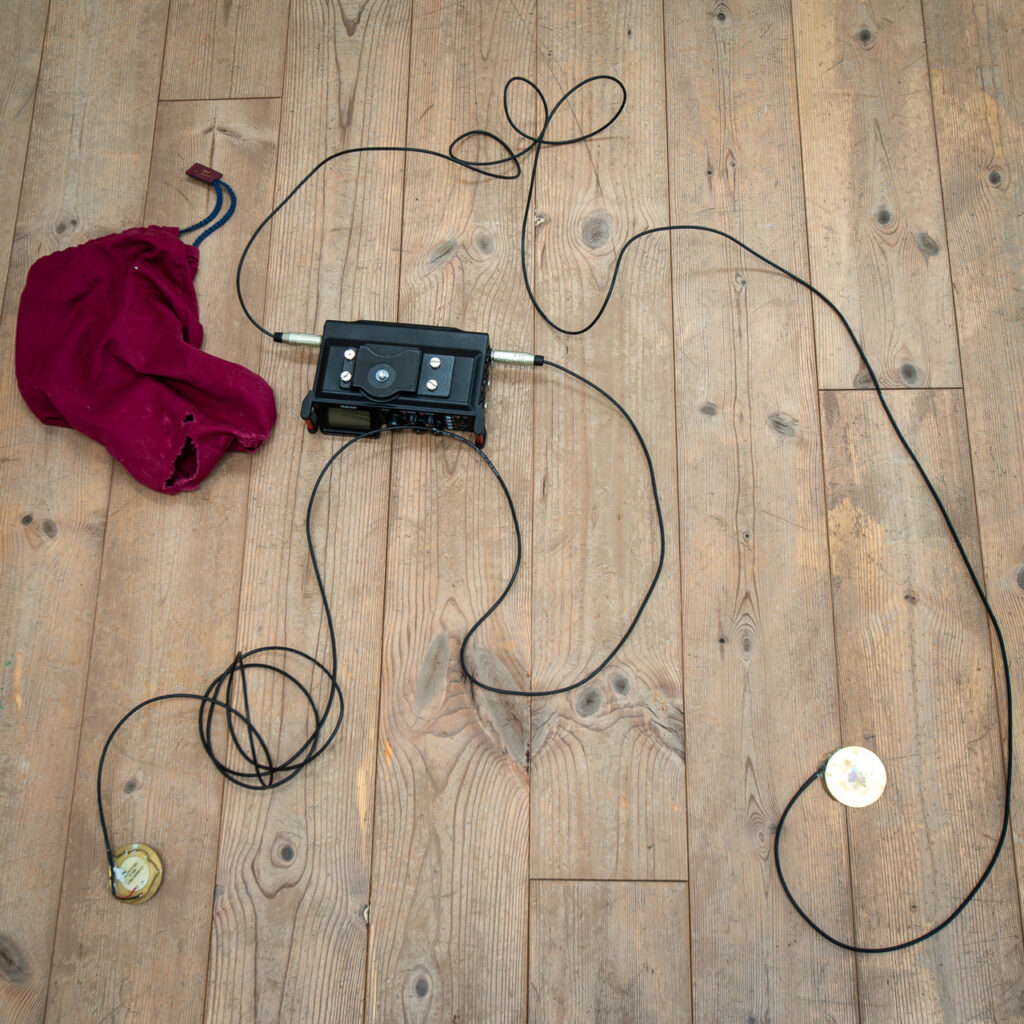

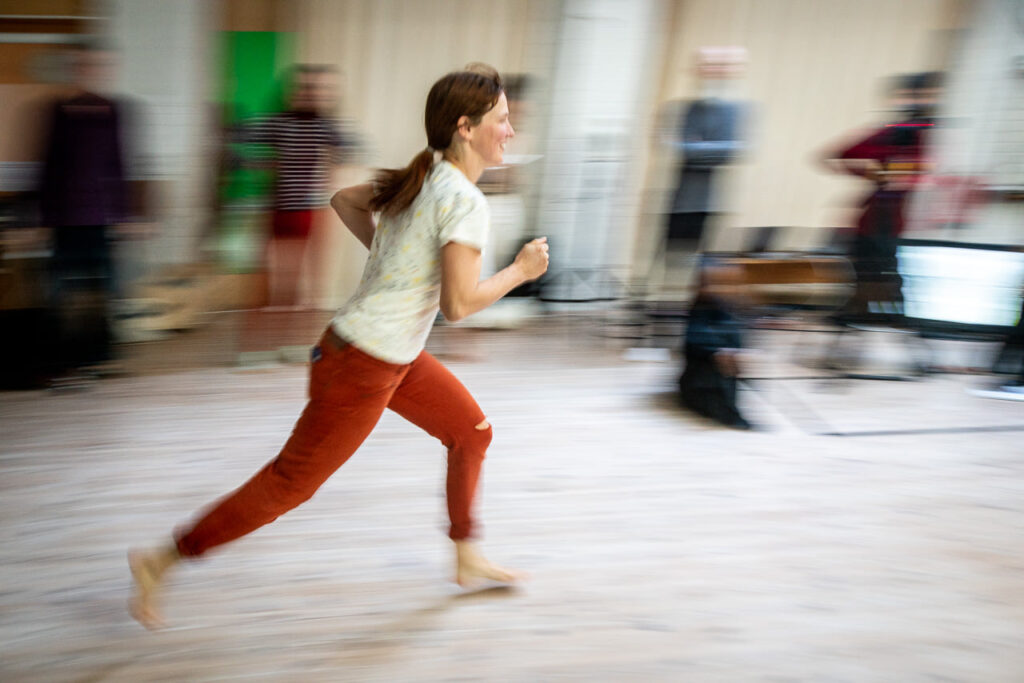
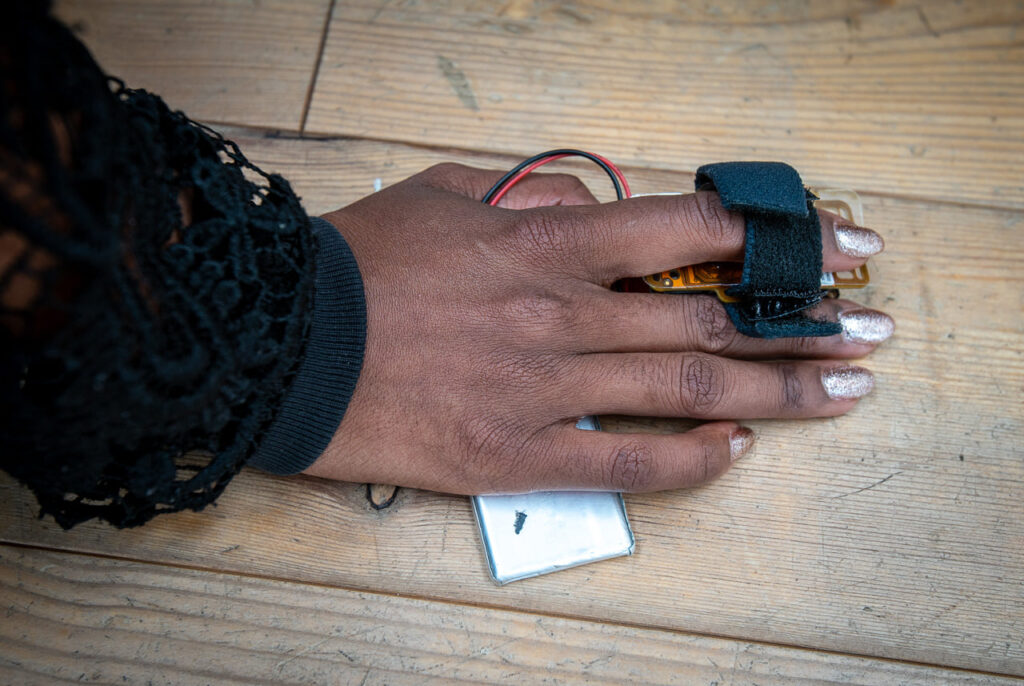
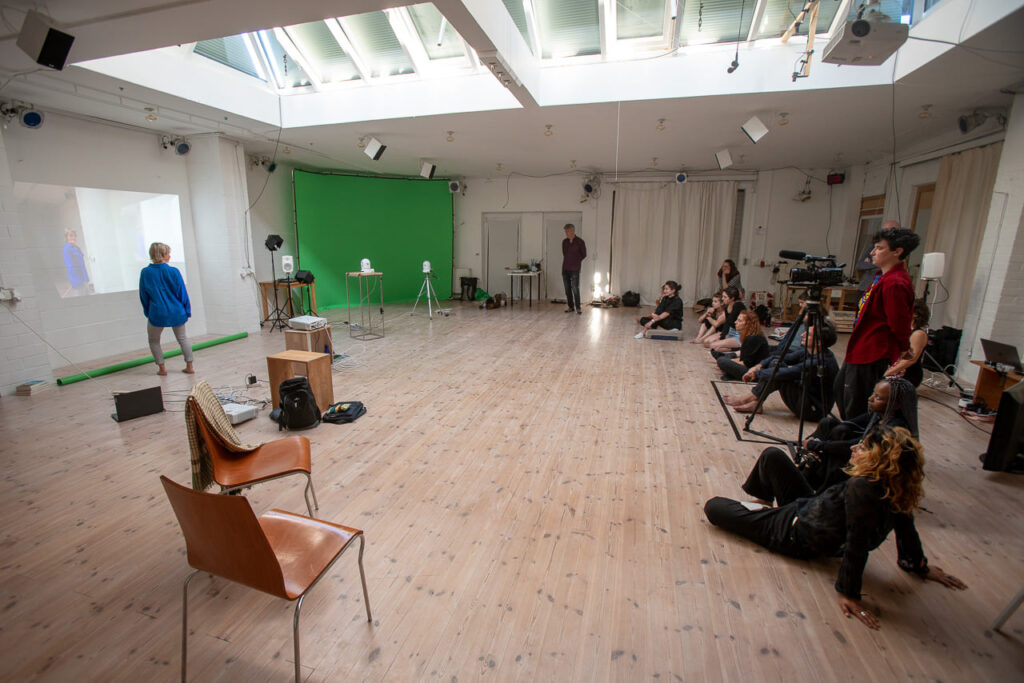
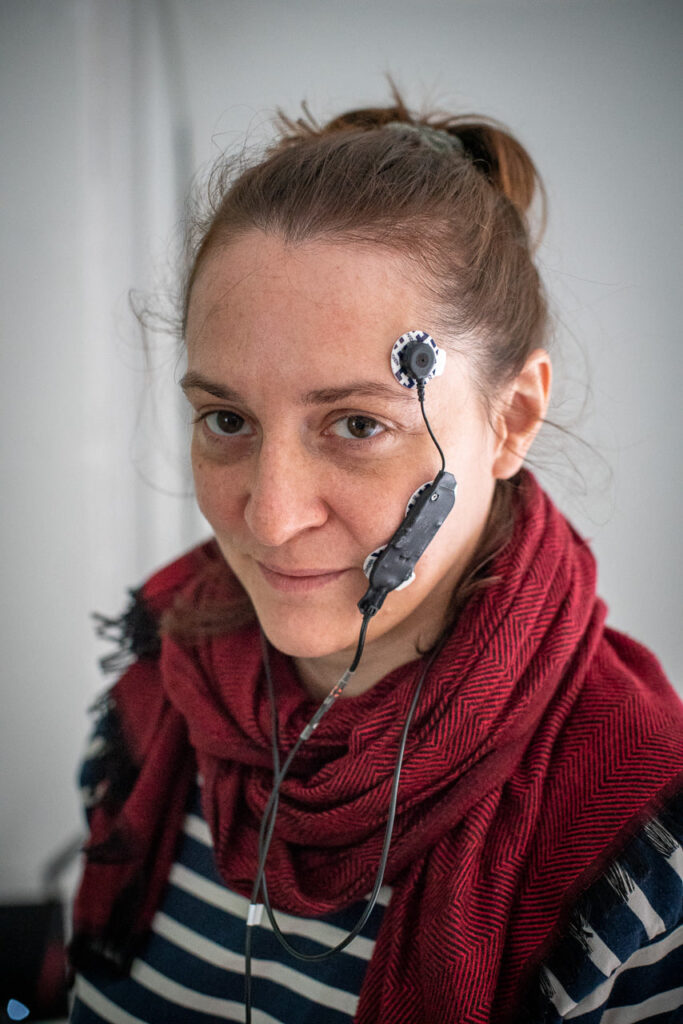
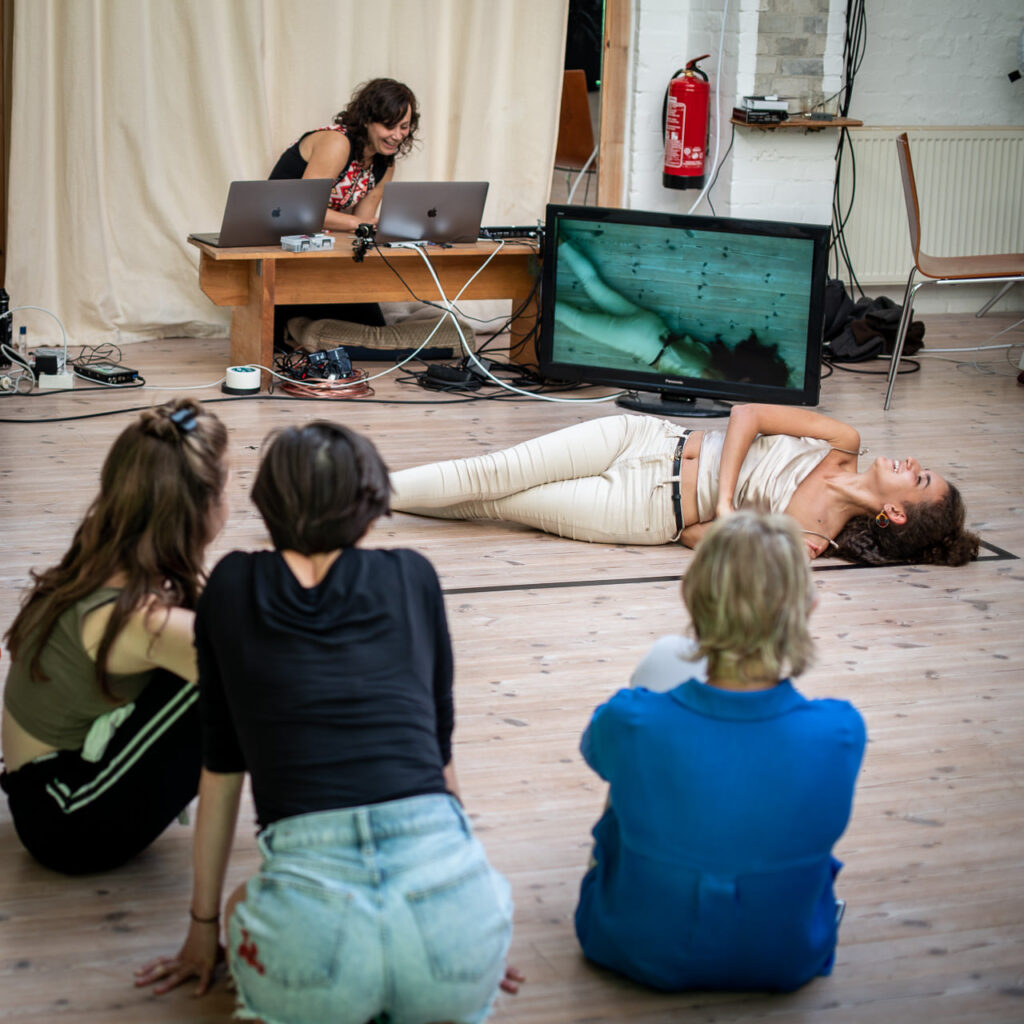
DIGITAL BODY LAB NO.2: INTELLIGENCE & FORM
18.08.2022 – 31.08.2022
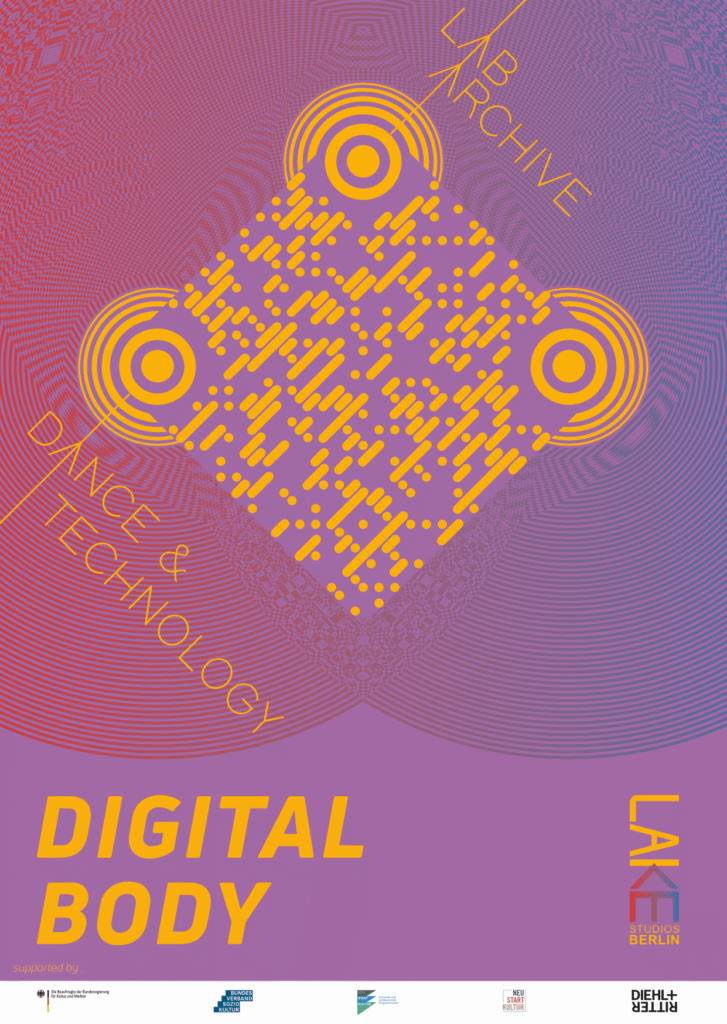
Welcome to the second Digital Body Lab blog! This page will be updated regularly during the duration of the Lab — follow our process of research and discovery in real time, or after the Lab in archive form!
A few of the questions and prompts for thoughts we asked ourselves during the Lab:
About the topic of the lab/residency:
- What is intelligence? What is form?
- Can we understand somatic intelligence as a form of knowledge?
- Is form only a way to understand something within its context, or is it the idea being put into shape?
- How many different forms of intelligence are there? What about neurodivergence and other non-typical forms thinking and perception?
Ethical questions about AI:
- Where lies the ownership of work that is created with an AI that uses training data from internet scrapes?
- What is the carbon footprint of a work made with AI (servers, internet, processing of data)?
- Does an image generating AI end up only producing work that we judge as “pleasing”?
- Does attention become our currency?
- AI is owned by big corporations – are we helping those corporations to gain more power by feeding the AI with our information? (e.g. in terms of copyright but also financially)
Why as artist do we or should we use technology?
- Principle of “no technology before need” (as suggested by TroikaRanch)
- Can we tailor the technology we want to see by creating artwork that uses/misuses tech that is available to us?
- Talking about technology and our struggles with it asks us to use said technology. How do we balance speaking about the human body vs. a machine?
- How, as a performer, can I be in power of the technology that I use and not have to depend on others to solve technical issues?
- What is the impact of the technology we use in terms of ecological issues? Can we find balanced ways to talk about our modern day perception of technology, its use/function, its benefits and disadvantages by using it in ethical ways and considering carefully where we really need it?
Below, you’ll find a more detailed description of what happened during the days of the lab…

It’s only been a few days since the welcoming circle and the meeting of this year’s new participants on the first day, where each of us briefly tried to summarize what has happened for our artistic practice since the Digital Body Lab #1. We shared ideas, intentions, reflections and inspirations about where we are and where we want to go in the next 10 days. Then we directly jumped into a lively and intense discussion, attempting to define what intelligence means, and how we can define it in the context of current realities and in the context of working with media and performance. A lot of questions arose around the creation of value in capitalist societies that is attached to the common perception of what intelligence might mean. Finding definitions that inspire us to question the word and its definition in all its forms – shadow aspects, as well as the positive impulses it can give us to move forward from the status quo.

But what is form, and are we tied to it as a notion of translating our thoughts into something tangible? Does it only exist in time, or is that not even relevant? Do we need to be able to answer all our questions, or is posing the question enough of an impulse to start doing?
We then dove into the topic of AI (artificial intelligence) and its potential and pitfalls for creating artistic work. Mark Coniglio gave an introductory talk to the topic and showed a few examples, that we then shared about in the group. Split up into smaller units we started the process of getting into the more technical aspects of creating instruments and material which we will develop over the time of the lab – exploring materials and the forms we can use to express our ideas.

Links to Resources on AI
Lecture by Morton Subotnick
Morton Subotnick’s lecture talked about the history of multimedia art and how this art form developed in parallel with technologies becoming more available as tools for individuals and artists. His own desire to create something with these tools the new questions he felt the artist at this time (1960ies/1970ies and further) were posing. What can the viewer experience that is meaningful in a new way, yet still always thrives to create something that is alive and in movement, and in some way relatable on an emotional level, without designating a particular way of how it should be experienced? Is for a term that is too immobile, or is it also the procedure, the temporary shape and context of something that evokes a feeling in us, and makes us relate to a piece of art? Questions we might not answer, but still keep in mind while we start to create.
We are getting into the doing, from a place of thinking and reflection, with inspiration and curiosity about where this process might take us. Smaller groups are discussing which technologies might be useful and take their ideas further, or just still discussing ideas and concepts.

Lecture by Sammy Chien & Chimerik Collective
Sammy Chien gave us an introduction into their personal artistic history and working with Mark as a mentor. They talked about their approach to technology and dance, and the spiritual aspects of their work and how activism is also part of sharing the knowledge that they have gained as a performer. They gave us an in depth documentation of the process of working on the project “W(e)aves”, which was started during a residency at Lake Studios, and showed us how it evolved from a first idea into a performance piece using a Kinect camera. The evolution of the pictogram/letter that stands for “dancer” (originally meaning “shaman”) was used as a starting point to reflect on the deeper meaning behind their role as an artist.

Sammy also introduced the research that they have been doing with Chimerik Collective. They showed us snippets from “The Home Improvement Ball” and “Ritual Spective” – two pieces they developed during the Covid19 pandemic, which brought audiences together on Zoom through interactive participation. To round things off, they presented us with the opportunity to play with one of their newest pieces “003_playback”, which was designed by Caroline MacCaull – who was inspired by Loop Diver (a piece by Troika Ranch) – using technology to make choreographic decisions. The participants were able to influence said decisions through a voting system, and use the chat to design part of the audio score for the piece. They also shared an open call for contributions for Virtual Live Art Research, where artists can share their experience working with this technology.

Aside from the inspiring lectures and in depth discussions, everyone has started to explore the possibilities of the technology we have available here in Lake Studios, and thinking about ways to use them in their own artistic piece. At the end of the lab, we will all share a glimpse into our work to the other participants. Small collaborations are forming and we are setting up pieces of gear to play with them and explore the possibilities that they offer, but also questioning our choices on why we use a certain technology and what it can mean conceptually for a piece how we use said technology.

Lecture by Muriel Romero & Pablo Palacio
Muriel and Pablo gave us a very exciting insight in their process of working with motion capture systems and sensors that enable the dancer to play music on stage, to control lights and that create a unique relationship with the live performer through sonification of movement. Pablo talked about the more technical and theoretical aspects of their work, and Muriel spoke about how, as a performer, she has experienced working with different kinds of sensors and moCap systems that allow her to express herself more fully as a performer.
They showed us several works that illustrated various possibilities of how sensors could be used as input devices, and how they developed a language of movement qualities working with them, that allow them to express the hidden resonances of moving bodies and using it as an expansion of the body – which can offer challenges and be liberating but also potentially limiting. The latest piece they have been working on is a quite intensely technological piece called “Embodied Machine”, that was very inspiring to see. A recommendation from them that will be good to keep in mind when working with motion capture is to record data, so the tech team can experiment with different setups, without needing the performer to be present at all times.

Research presentation by Benjamin Krieg, Phillip Hohenwarter & collaborators
Benjamin and Phillip gave us an introduction of how they use PTZ (pan-tilt-zoom) cameras in a theater context. They offered us insight into their research process and showed us various possibilities of how to use them aside from just as movable cameras that can be used for live performance. From looping small movements to creating landscapes over time, there are many creative ways to use these cameras as part of a piece, and seeing the research was very inspiring. They also showed us some experiments they made with AR as a technology that can be explored for live performance and installation pieces. They created this presentation as part of the PLURAL EYES residency that was supported by Fonds Darstellende Künste with funds from the Federal Government Commissioner for Culture and Media within the program NEUSTART KULTUR.

Lecture by Marco Donnarumma
Marco joined us from Iceland via Zoom, where he is doing research for a new performance project. He talked about transdisciplinarity, critical thinking and bias related to technology, and took us on an exploration of the visceral body through his work. The idea of purity as a construct, playing with repulsion vs. fascination, and the aspect of spectacularization were discussed as topics in working with the body in connection with technology. The problematics that arise through an abelist society, when it comes to questions of identity and leveling the field in terms of equality were strong points that were brought up. Another interesting aspect of technology as a “prosthetic” is that it can open possibilities for disabled, neurodiverse or other non-mainstream, non-neurotypical thinking.
One of the quotes that stuck with me personally, that Marco mentioned was: “It is not an absence of health or cleanliness which makes something abject, but that which perturbs and identity, a system, an order; that which does not respect limits, places or rules” (Julia Kristeva – Approaching Abjection).

Lecture by Eni Brandner
Eni talked about her background in animated film and visual effects and how she approaches new technologies as a field of experimentation – how using AR, MotionCapture and Artificial Intelligence can open up ideas in relation to performance and how she found her practice through improvisation with seemingly inaccessible technology in playful approaches to the topic.

Lecture by Tim Murray-Browne
Tim’s lecture via Zoom talked about the challenges of working with AI, the ethical questions it involves and how we as artists need to design the experiences we want to have in the future, to enable us to create alternatives to mainstream uses of AI. He spoke about audience interaction and its challenges, bespoke datasets and designing an AI for the purposes of artistic work. How can we create tools that we will want to use in the future? How can we work with highly biased systems, or how can we counter act against them? A lively and fruitful discussion ensued after the talk, in which Tim shared his insights and experiences from working with Teachable Machines and AI since 2015, when they first became accessible to artists, scientists and programmers.

Mini Presentations by participants
The last few days of the lab gave us place to share as a group, about our ideas, our wishes and our insecurities that arose from trying out new ways of working and dealing with the challenges that using technology in unexplored and innovative ways sometimes throws our way. We were able to show our prototypes, our starting points, our processes and reflect with the group to see where we can clarify, refine and restructure.

Residencies – work in progress..
The residencies have started, so now everyone is working intensely on more detailed setups to realize their ideas, and go more into depth with all the inquiries and inspirations that were brought up during the lab. Digesting, reviewing, rethinking.
On September 30th, there will be a final presentation of the works, so come and see for yourself what all of us have created. Participate, watch and discuss – we are curious to hear your feedback!
